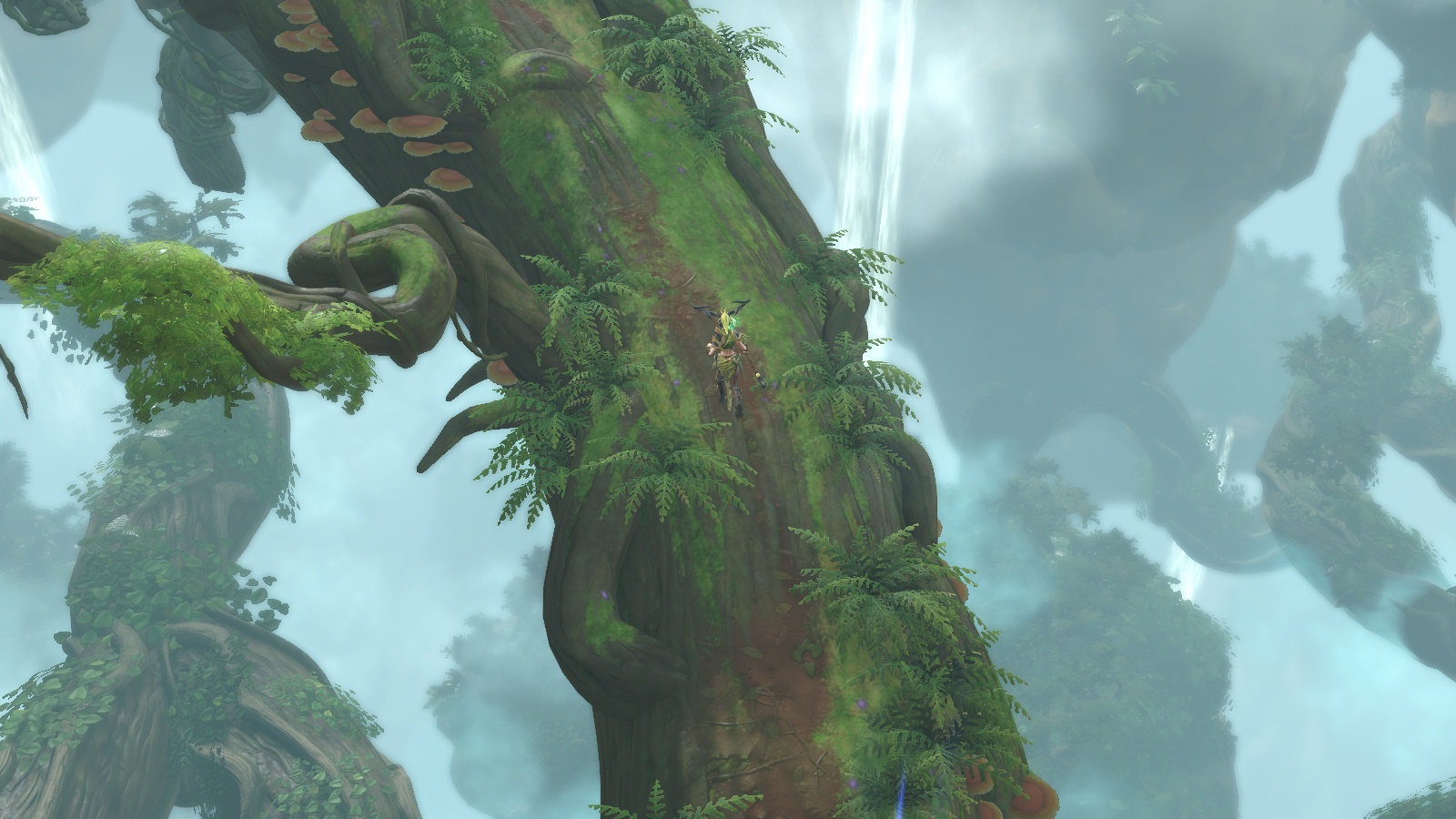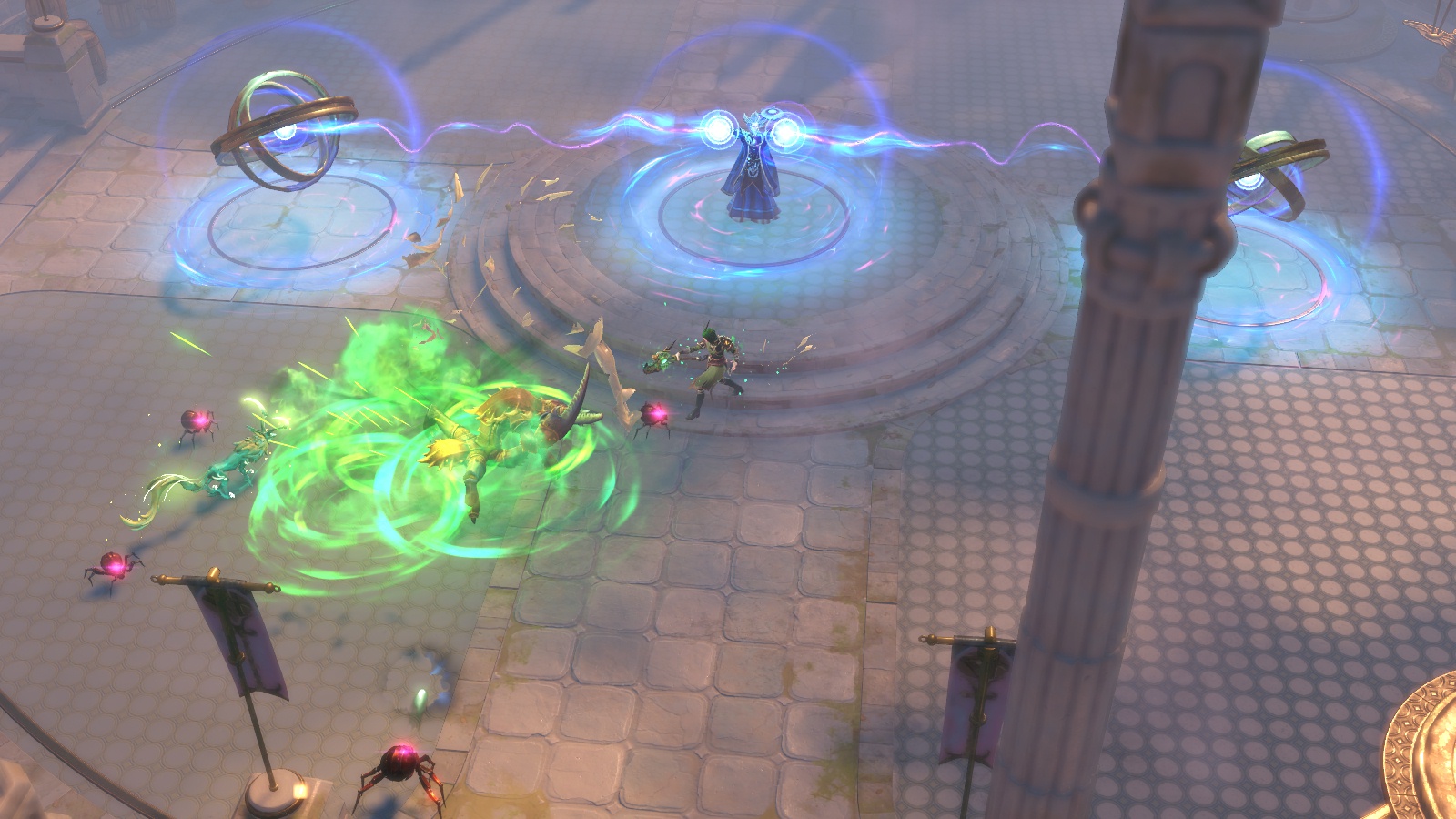
Inevitably after a couple weeks in a new game, you’ve learned a few things that you wish you’d known from the start. For me right now, that game is Magic: Legends. While I can’t go back and tell my past self what I know now, I can share it with you, the community, in the hopes of offering a smoother ride to others as the game moves through its soft beta and on toward hard launch.
For movement, keyboard is king
ML has two different movement control schemes you can choose from: a standard click to move set-up such as you’d find in most isometric ARPGs, and a WASD set-up more similar to what you find with over the shoulder camera games.
The click-to-move set-up is on by default, but it never worked right for me. I was constantly moving toward enemies I meant to attack. This is an issue that can arise in any click to move ARPG, but it seemed a lot worse here. Maybe it’s a bug that will be fixed in time, but it frustrated me enough I decided to try keyboard movement instead.
It’s so much better. The issue of moving when you mean to attack, or vice versa, is completely removed, and it just feels so much better. You do need to get used to adjusting the camera a lot to attain fine control, but after a short learning curve it starts to feel quite natural. I don’t think I’ll ever go back to click to move, even if it gets polishing.
What to spend on
Magic: Legends is relatively generous as free to play games go, especially now that the Dimir Assassin unpleasantness has been cleared up, so I do think that playing entirely free is a viable option, but of course, the experience will be better if you splash a little cash.
Naturally, you also want to get the most bang for your buck, and there are definitely some purchases that are more worth it than others. It should go without saying, for instance, that the random booster packs aren’t worth it. The odds of getting anything truly good from them are tremendously small.
So what is worth it?

One of the best purchases is the premium Battlepass. While the free track of the pass is also pretty rewarding, naturally the premium track is better. For a pretty reasonable $10, you can get access to a wealth of costume pieces, skins, and resources. Most of the more desirable rewards are found in the first 30 levels, too, so they’re not the most challenging to get.
The other best buy is the deck and loadout slots. The best part of the game is the flexibility of its build system, but by default you have only two slots for loadouts and decks. You can just keep tinkering with your existing loadouts, but it’s definitely more convenient to be able to save multiple and switch between with a single click. Thankfully, loadout and deck slots are pretty reasonably priced at $5 a piece.
The rest of what you find in the shop amount to nice-to-haves, but there’s nothing that’s going to make a huge difference to your experience of the game.
Upgrade your lands before your spells
In the physical card game, land cards are your main source of mana, but in Magic: Legends, they serve a different purpose. Leveling up the Aetheric Core in your realm lets you build lands, and these in term reduce the spell page cost to level up your spell cards.
When you’re first starting out, this can seem like a minor perk, but you’ll soon realize just how important it is. While spell pages drop constantly, the number you need for to level up each card increases rapidly as you climb through the levels. You’ll end up starved for spell pages very quickly if you’re leveling your cards as fast as you can.
This is where lands come in. If the number of lands corresponding to a certain mana type is higher than the level of a card of that colour, the spell page cost to upgrade that card is reduced by a whopping 75%. For example, if you have four plains, any white cards of level three or lower have the 75% spell page cost reduction applied.

It is therefore crucial to efficient leveling that you rarely if ever upgrade a card until you’ve upgraded the corresponding lands enough to benefit from the cost reduction. It might slow your progression a little bit in the short term, but it will save you a lot of grinding in the long term.
How creatures work
One of the great things about Magic: Legends is the incredible variety of creature cards you can use to summon minions of all kinds. If you like playing pet classes in ARPGs, this is definitely a game for you. The downside, however, is that a lot of the mechanics around creatures are explained poorly or not at all.
One example is how to understand your creatures’ health and damage stats. Similar to creatures in the physical card game, each creature has a power and toughness rating, which will be displayed in a format like “1/1” or “2/3.” Where it gets confusing is each card also lists health and damage in the large numbers you’d expect from an RPG of this kind. A creature might list, say, 233 DPS and 4352 health.
How it actually works is that the power and toughness ratings are actually a multiplier for the other stats. To use a simple example, say you have a 2/3 creature that lists 100 DPS and 1,000 health. That means its actual stats are 200 DPS and 3,000 health.
It’s not super intuitive, and there doesn’t seem to be anything in the game that explains it, but it does have the advantage of helping you calculate exactly how much benefit your creatures get from various buffs, as there are a lot of cards and items that temporarily buff your creatures with effects like “+1/+1.”
Another important stat is Creature Points (CP). This is a little easier to understand, but the game still doesn’t explain it very well, so it can still be confusing at first. You’ll notice creature cards generally say something like “creature – 2 points.” This is the CP cost, which determines how many creature cards can be in your deck.

Each deck has a limit of 12 CP, and beyond that, you can’t add any more creature cards to it. More powerful creatures cost more points, while weaker creatures cost less.
If this seem as if it might put an end to your dreams of a traveling murder zoo, fret not. The limit is fairly generous, and there are numerous ways to get around it. Many items and cards allow you to summon additional creatures, and these won’t count towards your CP limit. The trade-off is these creatures have timed life, rather than persisting until killed like creatures with a CP cost.
That brings us to the final murky creature mechanic: What happens when you use a creature card after that creature has already been summoned? Given how complex the above mechanics are, you won’t be shocked to learn the answer is, “It depends.”
In some cases, creatures have activated abilities. For such creatures, using the card while the creature is up will cause them to use their ability. You’ll know this is the case because the card’s icon will shift to a gold tint. Do note that many creatures have abilities that they use automatically on a cooldown, which is a separate mechanic.
In my opinion, all creatures should have had the active ability mechanic, but for most of them, using the card again simply summons another copy of the creature, which replaces the old one. There is a brief period of a few seconds where both copies will be active and fighting for you, and you’re effectively healing your creature to full, so it’s not a total waste of mana, but it does feel a bit underwhelming.
One other thing that softens the blow is that some creatures have an on-summon effect, such as dealing AoE damage when they appear. So at least in those cases you can benefit from the on-summon effect when you summon an already active creature.
 The world of online gaming is changing. As the gray area between single-player and MMO becomes ever wider, Massively OP’s Tyler Edwards delves into this new and expanding frontier biweekly in Not So Massively, our column on battle royales, OARPGs, looter-shooters, and other multiplayer online titles that aren’t quite MMORPGs.
The world of online gaming is changing. As the gray area between single-player and MMO becomes ever wider, Massively OP’s Tyler Edwards delves into this new and expanding frontier biweekly in Not So Massively, our column on battle royales, OARPGs, looter-shooters, and other multiplayer online titles that aren’t quite MMORPGs.













